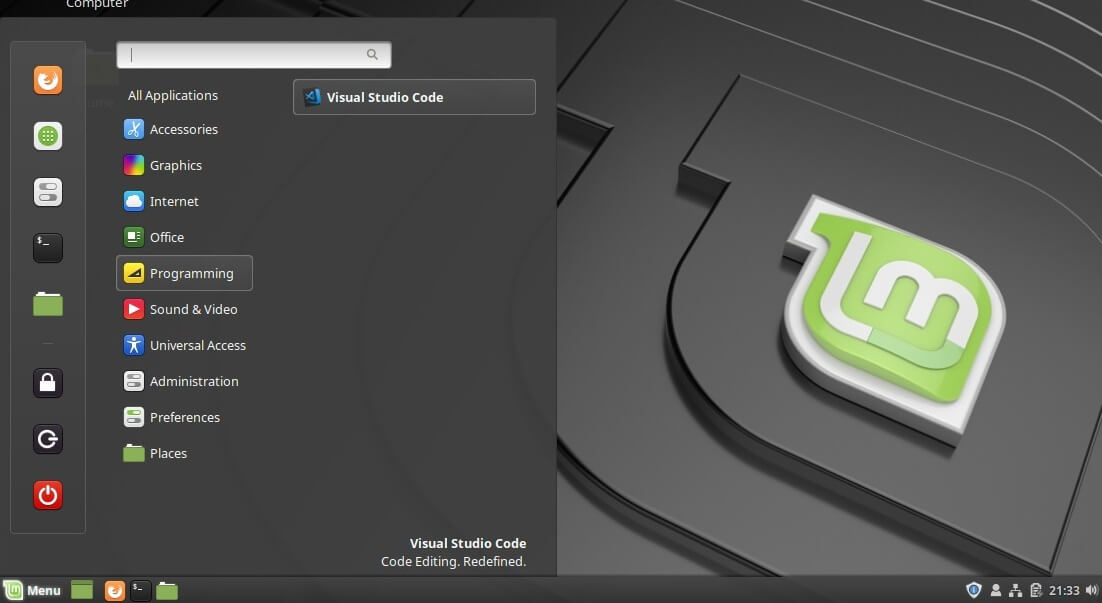The commands on the following page has been performed and tested with thefollowing versions:
- Ubuntu 18.04 LTS 64bits
- Linux 4.15.0-76-generic
- Python 3.6.9
- Visual Studio Code 1.42.1
Update your system
Start by updating your system:
Install Visual Studio Code
Install Visual Studio Code with Ubuntu Software. Other methods can be used,but Ubuntu Software remains the more stable option.
Visual Studio Or Visual Code
Install Python
Now, to install the Visual Studio Code DEB package file, run the APT command as follows. $ sudo apt install. / code.deb The APT package manager should start installing the DEB package file. At this point, Visual Studio Code should be installed. Visual Studio Code is free and available on your favorite platform - Linux, macOS, and Windows. Download Visual Studio Code to experience a redefined code editor, optimized for building and debugging modern web and cloud applications. Visual Studio Code is a lightweight but powerful source code editor which runs on your desktop and is available for Windows, macOS and Linux. It comes with built-in support for JavaScript, TypeScript and Node.js and has a rich ecosystem of extensions for other languages (such as C, C#, Java, Python, PHP, Go) and runtimes (such as.NET and Unity).
Python is already installed on Ubuntu. But be carrefull, two versions coexiston ubuntu: Python 2.7.17 and Python 3.6.9. The default version is the older one.I advise against using this old version. Instead, I strongly recommandusing virtual environments with Python 3.

Install the Python paquet manager pip:
or
Virtual environment
Install virtualenv with the following command:
Create a virtual environment for your project and specify this environment willuse Python 3.
Download 3gusb usb devices driver. You'll have to run the previous command everytime you'll create a new Python project.Activate your environment:
The name of the environment should appear at the beginning of your command line:
Validate that everything is fine by checking the versions:

You can deactivate the virtual environment with the following command:
Configure Visual Studio Code for Python

Launch Visual Studio Code. In File>Open folder [Ctrl-K Ctrl-O], sélect thefolder where you created your virtual environment. Create a Python script namedversion.py and add the following code:
Run your script by hitting CTRL-F5. Visual Studio Code should ask you if you want to installpylint for checking code quality and suggest best practices. I strongly recommand to accept andinstall pylint.
You script should display something like:
Python 3 is running in your virtual environment in Visual Studio Code. You caneven set break points and debug your application by hitting F5 instead of Ctrl-F5.
Enjoy!
See also
Install Visual Studio Code on CentOS 8 - Step by Step Process ?
This article covers how to install the VS code package on CentOS 8 using the command line application. Visual Studio Code is a free and open-source, cross-platform IDE or code editor that enables developers to develop applications and write code using a myriad of programming languages such as C, C++, Python, Go and Java to mention a few.
Visual Studio Code Appium
To Install Visual Studio Code on Debian, Ubuntu and Linux Mint:
1. Update your system by running the command.
2. Once updated, proceed and install dependencies required by executing.
3. Next, using the wget command, download the repository and import Microsoft’s GPG key as shown:
4. Once you’ve enabled the repository, update the system and install Visual Studio Code by running the command:
Visual Studio Code Ubuntu Apt-get
